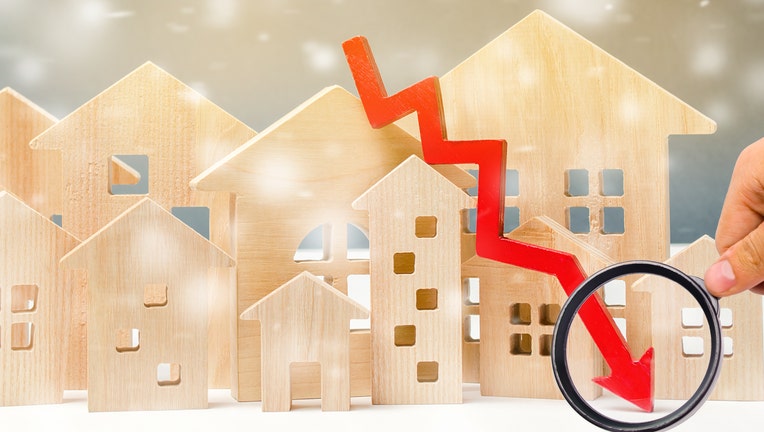The mortgage refinance window could end soon — here's why you should act now

Here's why refinance borrowers should act now. (iStock)
2020 will always be remembered as the year of the coronavirus pandemic. In the future, however, consumers and economists will also look back on 2020 as the year of record-low mortgage rates and an unprecedented mortgage refinance spike. Since Q1 2020, refinance activity is up 200% over where it was in 2019.
A coronavirus vaccine entering the market is good news, but with it, a few of the small "silver linings" of the pandemic may end – namely, record-low mortgage rates.
If you want to take advantage of today's low mortgage rates, make sure you use Credible's free online tools for your research. The online marketplace can help you find personalized rates within minutes and compare offerings.
Here's why mortgage rates could rise soon
Currently, mortgage refinance rates are well below 3%, and ticking lower week-to-week, but this could soon change. Here are two big indicators the mortgage refinance spike may be drawing to a close.
- Post-pandemic economic recovery
- The second round of government stimulus
1. Post-pandemic economic recovery
With multiple pharmaceutical companies reporting effective vaccines, it would appear a return to "normal" is on the horizon. Unemployment, which peaked at 14.7% percent in April, is already closer to pre-pandemic rates (around 3.5%) at 6.7% in November 2020.
Unemployment is just one indicator of the health of a country’s economy. As the economy heals, rates will increase, but to what rate is hard to predict. The Federal Reserve projects rates at near-zero through 2023, but if the economy bounces back from the pandemic sooner, this could increase rates sooner than the current projections.
HOW TO GET THE BEST MORTGAGE REFINANCE RATES
2. Second round of government stimulus
The quick explanation for how a government stimulus affects mortgage rates is this: when the government needs money for things, it has to get the money from somewhere, so they create the debt and offer it to investors in the form of bonds, which provide a return on investment known as the yield rate. In order to get the money they need, the government could increase yield rates in order to make the bonds attractive to investors.
The mortgage rate often closely mirrors the 10-year treasury rate, which is why the second round of stimulus would likely increase both the yield and mortgage rates.
If you think it's time to refinance your mortgage, run the numbers and compare rates from multiple mortgage lenders via Credible. Having all the information, including lender fees and other costs, will help you decide whether a refinance will help you meet your financial goals.
REFINANCE STUDENT LOANS NOW AND YOU'LL LIKELY SAVE MONEY - HERE'S WHY
Why you should refinance your mortgage now
For those looking to capitalize on the lowest rates in recorded history, it’s best to shop and lock in rates now before the end of the year, rather than waiting to see what happens in 2021. Visit Credible to shop rates with multiple lenders, get in touch with experienced loan officers, and see how much you can save by refinancing your mortgage.
MORTGAGE RATES HIT A 'SWEET SPOT' — WHY IT'S THE PERFECT TIME TO REFINANCE
Be aware of this new refinance fee
On December 1st, lenders began adding a .05% "adverse market fee" to all mortgage refinance loans, including cash-out refinances. Why? The fee is to help government agencies like Fannie Mae and Freddie Mac recoup losses due to the COVID-19 outbreak. Fannie Mae and Freddie Mac are big players in the secondary mortgage market; they end up buying billions in loans each year from lenders so the banks can stay liquid and continue writing loans to consumers.
With Credible, you can get a full picture of just how much this new refinancing fee could impact your personal finances. Crunch the numbers with Credible's free online tools today to find out.
WHO'S EXEMPT FROM THE NEW MORTGAGE REFINANCE FEE?
Some lenders who closed on loans pre-December may have already added this fee to their refinanced loans in anticipation of selling these loans to Fannie Mae and Freddie Mac. For context, adding in a .05% fee means a consumer will pay roughly $500 more for every $100,000 of their mortgage (or mortgage refi) loan.
Or, if lenders are offering 3% interest rates, when accounting for the fee (1/8 of a point as reported in Forbes), it could actually be an interest rate of 3.125% over the life of the loan.
The addition of this fee makes refinancing more expensive and depending on the amount and the initial interest rate, this fee could make refinance savings negligible when you factor in total fees and closing costs. It’s important to do the math here as the only true way to determine if refinancing is right for you is to utilize an online mortgage refinance calculator to determine your new monthly costs.
When using the calculator, it is most important to look at your "break-even" date - if the savings are enough to net money in your pocket even after fees and closing costs within the next year, refinancing still makes sense. If it could take years to recoup closing costs, it may not make sense to refinance now, especially if you plan to sell the home in the near future.

